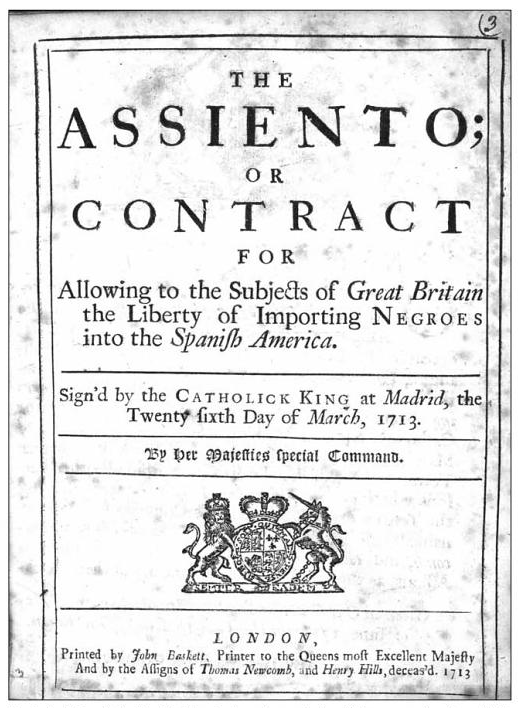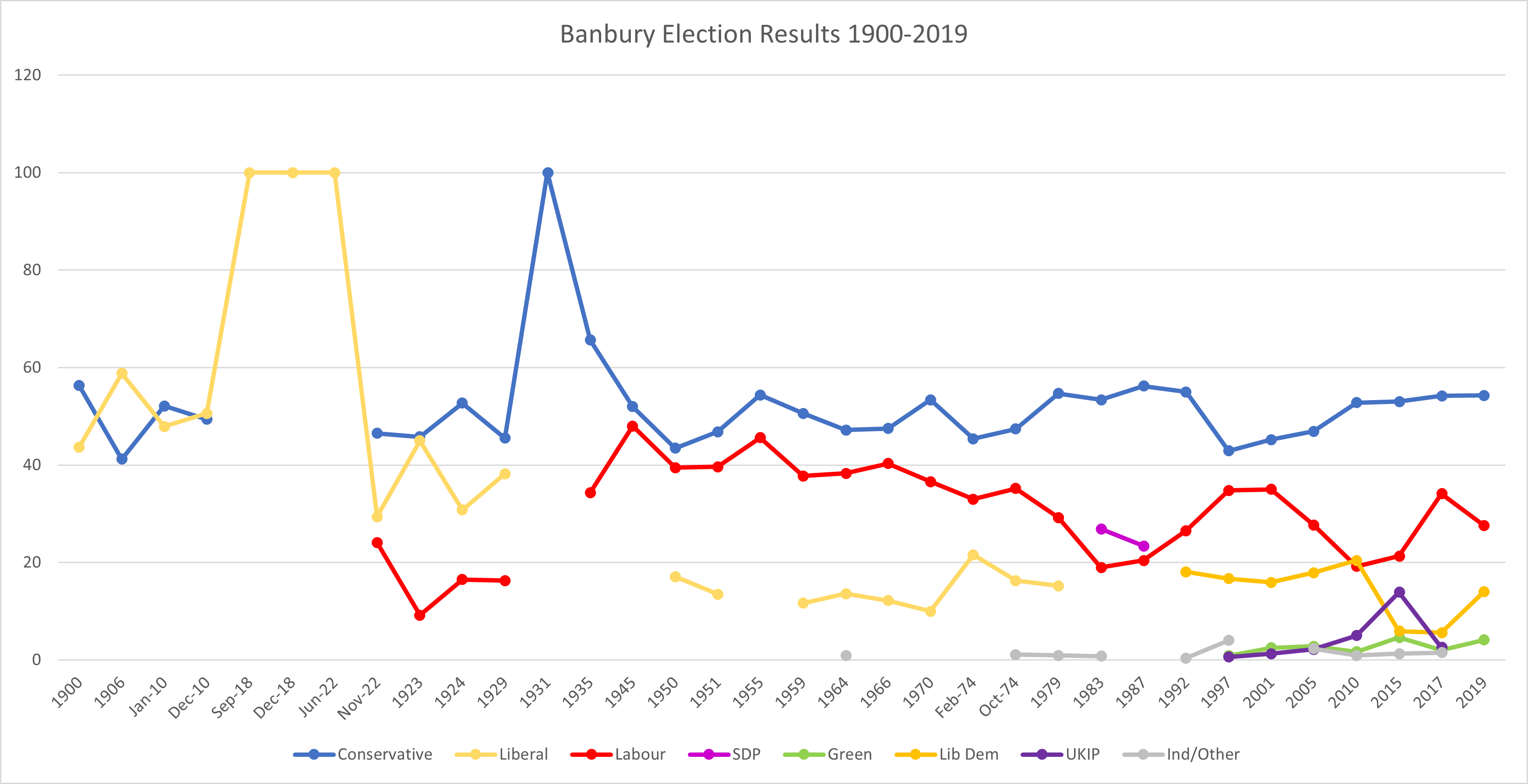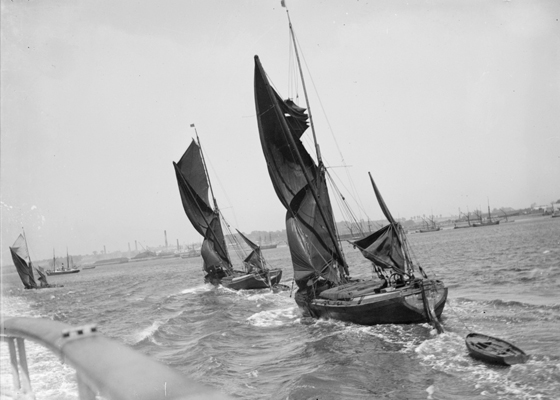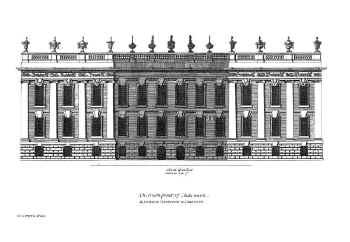|
Arthur Moore (Grimsby MP)
Arthur Moore M.P. (c. 1666 – 4 May 1730), of Fetcham Park, Surrey, was an Irish businessman, economist and Tory politician who sat in the English and British House of Commons between 1695 and 1722. Life He was said to have been born in Monaghan, about 1666. An adventurer, his background was said to have been in service. Moore studied trade questions, made money rapidly, and at the 1695 English general election was returned to parliament Member of Parliament for Great Grimsby, in Lincolnshire. At the election of February 1700-1 general bribery prevailed there, and although Moore petitioned against the members returned he did not claim the seat, and bribery was proved in his interest. With the exception of that short parliament, he represented the borough from 1695 to 1715, and he was again elected at a by-election on 11 February 1721. At the 1722 British general election he was defeated at Grimsby and petitioned, but withdrew his claim next month. He had a house in Grimsby, and ... [...More Info...] [...Related Items...] OR: [Wikipedia] [Google] [Baidu] |
English House Of Commons
The House of Commons of England was the lower house of the Parliament of England (which incorporated Wales) from its development in the 14th century to the union of England and Scotland in 1707, when it was replaced by the House of Commons of Great Britain after the 1707 Act of Union was passed in both the English and Scottish parliaments at the time. In 1801, with the union of Great Britain and Ireland, that house was in turn replaced by the House of Commons of the United Kingdom. Origins The Parliament of England developed from the Magnum Concilium that advised the English monarch in medieval times. This royal council, meeting for short periods, included ecclesiastics, noblemen, and representatives of the counties (known as "knights of the shire"). The chief duty of the council was to approve taxes proposed by the Crown. In many cases, however, the council demanded the redress of the people's grievances before proceeding to vote on taxation. Thus, it developed legislative p ... [...More Info...] [...Related Items...] OR: [Wikipedia] [Google] [Baidu] |
Assiento
The () was a monopoly contract between the Spanish Crown and various merchants for the right to provide African slaves to colonies in the Spanish Americas. The Spanish Empire rarely engaged in the trans-Atlantic slave trade directly from Africa itself, choosing instead to contract out the importation to foreign merchants from nations more prominent in that part of the world; typically Portuguese and Genoese, but later the Dutch, French, and British. The Asiento did not concern French or British Caribbean but Spanish America. The 1479 Treaty of Alcáçovas divided the Atlantic Ocean and other parts of the globe into two zones of influence, Spanish and Portuguese. The Spanish acquired the west side, washing South America and the West Indies, whilst the Portuguese obtained the east side, washing the west coast of Africa - and also the Indian Ocean beyond. The Spanish relied on enslaved African labourers to support their American colonial project, but now lacked any trading or t ... [...More Info...] [...Related Items...] OR: [Wikipedia] [Google] [Baidu] |
Banbury (UK Parliament Constituency)
Banbury, also informally known as Banbury and North Oxfordshire, is a constituency in Oxfordshire created in 1553 and represented in the House of Commons of the UK Parliament since 2015 by Victoria Prentis of the Conservative Party. She currently serves as Attorney General for England and Wales. In terms of electorate, Banbury was the 16th largest constituency in the United Kingdom at the time of the 2015 general election. Constituency profile The constituency has relatively high economic dependence on agriculture, as well as modern industry (particularly motorsport), research and development, public services and, to a lesser extent, defence. It contains two large market towns, Banbury and Bicester, where the majority of the electorate live. It is a partly rural seat, with the northwest of the constituency on the edge of the Cotswolds. The area has experienced significant urban growth and is popular with commuters who favour its fast transport links to Birmingham, Oxford a ... [...More Info...] [...Related Items...] OR: [Wikipedia] [Google] [Baidu] |
William Moore (1699–1746)
William Moore (4 June 1699 – 26 October 1746) of Polesden Lacey, Surrey, was a British politician who sat in the House of Commons from 1740 to 1746. Moore was the eldest son of Arthur Moore and his second wife who was from Linton, Gloucestershire. In 1730, he succeeded his father to Fetcham Park, Surrey, which his father had built at vast expense. He had to sell it in February 1735 to pay his father's debts on it. However he succeeded his uncle, Colonel Thomas Moore. at Polesden Lacey in 1735. Moore was returned as Member of Parliament for Banbury at a by-election on 25 November 1740 by his friend Francis North, 1st Earl of Guilford. He voted against the Administration in all recorded divisions except for the motion for removing Walpole in February 1741. He was returned unopposed for Banbury at the 1741 British general election. He signed the opposition whip of 10 March 1743. Moore died on 26 October 1746, and left his estates to North's son Frederick Frederick may refer to ... [...More Info...] [...Related Items...] OR: [Wikipedia] [Google] [Baidu] |
George Berkeley, 1st Earl Of Berkeley
George Berkeley, 1st Earl of Berkeley PC FRS (1628 – 10 October 1698) was an English merchant and politician who sat in the House of Commons from 1654 until 1658 when he succeeded to the peerage. Life Berkeley was the son of George Berkeley, 8th Baron Berkeley (d. 1658), and his wife, Elizabeth Stanhope, daughter of Sir Michael Stanhope. Berkeley was a canon-commoner at Christ Church, Oxford, but did not take any degree. In 1654 he was elected Member of Parliament for Gloucestershire in the First Protectorate Parliament. He was re-elected MP for Gloucestershire in 1656 for the Second Protectorate Parliament. Berkeley succeeded to the barony in 1658, and was nominated in May 1660 as one of the commissioners to proceed to the Hague and invite Charles II to return to the kingdom. In the following November he was made keeper of the house gardens and parks of Nonsuch Palace, where the Duchess of Cleveland later lived. In 1661 Berkeley was placed on the council for foreign pla ... [...More Info...] [...Related Items...] OR: [Wikipedia] [Google] [Baidu] |
Inner Temple
The Honourable Society of the Inner Temple, commonly known as the Inner Temple, is one of the four Inns of Court and is a professional associations for barristers and judges. To be called to the Bar and practise as a barrister in England and Wales, a person must belong to one of these Inns. It is located in the wider Temple area, near the Royal Courts of Justice, and within the City of London. The Inn is a professional body that provides legal training, selection, and regulation for members. It is ruled by a governing council called "Parliament", made up of the Masters of the Bench (or "Benchers"), and led by the Treasurer, who is elected to serve a one-year term. The Temple takes its name from the Knights Templar, who originally (until their abolition in 1312) leased the land to the Temple's inhabitants (Templars). The Inner Temple was a distinct society from at least 1388, although as with all the Inns of Court its precise date of founding is not known. After a disrupted early ... [...More Info...] [...Related Items...] OR: [Wikipedia] [Google] [Baidu] |
Epsom
Epsom is the principal town of the Borough of Epsom and Ewell in Surrey, England, about south of central London. The town is first recorded as ''Ebesham'' in the 10th century and its name probably derives from that of a Saxon landowner. The earliest evidence of human activity is from the mid-Bronze Age, but the modern settlement probably grew up in the area surrounding St Martin's Church in the 6th or 7th centuries and the street pattern is thought to have become established in the Middle Ages. Today the High Street is dominated by the clock tower, which was erected in 1847–8. Like other nearby settlements, Epsom is located on the spring line where the permeable chalk of the North Downs meets the impermeable London Clay. Several tributaries of the Hogsmill River rise in the town and in the 17th and early 18th centuries, the spring on Epsom Common was believed to have healing qualities. The mineral waters were found to be rich in ''Epsom salts'', which were later identif ... [...More Info...] [...Related Items...] OR: [Wikipedia] [Google] [Baidu] |
Northfleet
Northfleet is a town in the borough of Gravesham in Kent, England. It is located immediately west of Gravesend, and on the border with the Borough of Dartford. Northfleet has its own railway station on the North Kent Line, just east of Ebbsfleet International railway station on the High Speed 1 line. The area Northfleet's name is derived from being situated on the northern reach of what was once called the River Fleet (today known as the Ebbsfleet River). There is a village at the other end of the river named Southfleet. It has been the site of a settlement on the shore of the River Thames adjacent to Gravesend since Roman times. It was known as ''Fleote'' by the Saxons c. 600 AD, ''Flyote'' c. 900 AD, and ''Flete'' c. 1000 AD. It was recorded as ''Norfluet'' in the Domesday Book, and ''Northflet'' in 1201. By 1610 the name of Northfleet had become established. A battle took place during the Civil War at the Stonebridge over the Ebbsfleet river. Northfleet became a town in 187 ... [...More Info...] [...Related Items...] OR: [Wikipedia] [Google] [Baidu] |
Edward Browne (physician)
Edward Browne, FRS (1644 – 28 August 1708) was a British physician, and president of the College of Physicians. Life He was the eldest son of Sir Thomas Browne and was born in Norwich in 1644. Educated at Norwich School and at Trinity College, Cambridge. he graduated M.B. at Cambridge in 1663, and then returned to Norwich. A journal of his early life survives, which gives an amusing picture of his activities, and of life in Norwich. It records that he often went to dances at the Duke's palace, admired the gems preserved there, and learnt to play ombre from the Duke's brother. He dissected nearly every day, studied botany, read medicine and literature and theology in his father's library, and saw at least one patient. "16 Feb. Mrs. Anne Ward gave me my first fee, ten shillings." A week after this significant event, Browne went to London. He attended the lectures of Dr. Christopher Terne, physician to St. Bartholomew's Hospital, and married Terne's daughter Henrietta in 16 ... [...More Info...] [...Related Items...] OR: [Wikipedia] [Google] [Baidu] |
Thomas Carter (sculptor)
Thomas Carter (1702–1756) was an 18th century British sculptor. His nephew, also Thomas Carter (d.1795), was a sculptor who worked with him and it is hard to separate some sections of their work. They specialised in ornate marble fireplaces for English country mansions. Life His was born in London in 1702. He had a stone yard in Shepherd Market in London. He mainly made chimneypieces but also did some statuary. Around 1729 he received a loan of £100 from Charles Jervas who had met him through a business connection. This permitted him to get an assistant and buy some better quality marbles. Through this action he employed Roubiliac, but the latter quickly found his own clients and left the business. Carter later moved to premises in the Parish of St George's near Hanover Square, Westminster. Apprentices in his yard included John Deare and Peter Matthias Van Gelder. He died in 1795 and John Cheere was executor of his will. He was married to Mary and had two daughters: ... [...More Info...] [...Related Items...] OR: [Wikipedia] [Google] [Baidu] |
Louis Laguerre
Louis Laguerre (1663 – 20 April 1721) was a French decorative painter mainly working in England. Born in Versailles in 1663 and trained at the Paris Academy under Charles Le Brun, he came to England in 1683, where he first worked with Antonio Verrio, and then on his own. He rivalled with Sir James Thornhill in the field of history painting, primarily decorating the great houses of the nobility. His wall paintings can be found in Blenheim Palace, Marlborough House, Petworth House, Burghley House, Fetcham Park House and Chatsworth House. In the 1980s, a restoration project revealed work by Laguerre at Frogmore House also. His subject matter included English victories over the armies of Louis XIV; at Hampton Court Palace he carried out work for William III of England, for whom he depicted the Labours of Hercules. Laguerre painted religious subjects at St Lawrence's Church, Whitchurch, London. In 1731 Alexander Pope wrote, On painted ceilings you devoutly stare Where sprawl ... [...More Info...] [...Related Items...] OR: [Wikipedia] [Google] [Baidu] |
William Talman (architect)
William Talman (1650–1719) was an English architect and landscape designer. Career A pupil of Sir Christopher Wren, in 1678 he and Thomas Apprice gained the office of King's Waiter in the Port of London (perhaps through his patron Henry Hyde, 2nd Earl of Clarendon). From May 1689 until William III of England, William III's death in 1702, he was comptroller of the king's works, Comptroller of the Royal Works, and also in 1689 William Bentinck, 1st Earl of Portland appointed Talman and George London (landscape architect), George London as his deputies in his new role as Superintendent of the Royal Gardens. In these roles Talman worked with Wren in his rebuilding of Hampton Court Palace and its gardens and, by proposing a cheaper interior decoration scheme for the new building, won that commission over Wren's head. Works Talman's principal work is recognised to be Chatsworth House, considered to be the first baroque private house in Britain, and he was possibly the architect ... [...More Info...] [...Related Items...] OR: [Wikipedia] [Google] [Baidu] |





.jpg)


